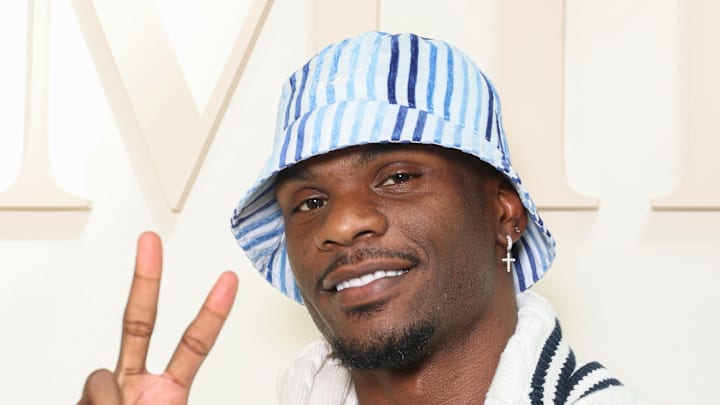Over the past eight seasons, there has only been one in which the Seattle Seahawks did not have a primary receiver average at least 15 yards per catch. That was 2022, and we all know what happened at the end of that season. The Hawks waved goodbye to their long-time head coach and starting quarterback.
Heading into the 2025 season, Seattle has another new quarterback and a new offensive coordinator. And even though we have all heard time and time again how much Klint Kubiak intends to run the ball, don’t think for a minute that his offense will not challenge defenses downfield. The run game and the deep passing game function symbiotically. You really can’t have one without the other.
Besides, this is something Sam Darnold does very well. Last year, his 7.9 yards-per-attempt was sixth best among all NFL quarterbacks. With him at the helm, Minnesota may not have had a primary receiver hit that 15 yards-per-catch mark. But in practical terms, they did even better. All three of their main wideouts averaged between 13.9 and 14.9. Everyone was getting downfield.
The Seahawks now have one of the most dangerous deep threats in the entire NFL
Marquez Valdes-Scantling was signed this offseason to fill this exact role. Statistically, he is not just among the best downfield options in the league today. His numbers say he is one of the all-time best. For his career, he is averaging more than 17 yards per catch. Neither D.K. Metcalf nor Tyler Lockett recorded that high a number for a single season.
Last year, playing for Kubiak in New Orleans, MVS caught 17 balls for 385 yards. Do the math. That’s better than 22 yards per catch. And that is an extraordinary number.
So it would seem that MVS is the ideal Z option: a big target who can stretch the defense. In theory, his speed should help clear out the middle of the field so that savvy receivers like Jaxon Smith-Njigba and Cooper Kupp can run wild. If the deep safety runs with MVS, the seam opens up for a talented pass-catching tight end, be it Noah Fant or Elijah Arroyo.
Marquez Valdes-Scantling would seem to be the key ingredient in preventing opposing defenses from stacking the box – and for making them pay when they do.
But is he?
We will find out soon enough. MVS’s Achilles' heel has always been drops. His career catch percentage is under 50%. Even allowing for the fact that deep receivers always catch a smaller percentage of their targets than do possession receivers, that number still isn’t very good.
Indianapolis’ Alex Pierce, who led all qualified receivers last year with a 22.3 YPC, had a catch percentage four points higher than MVS. And Pierce really wasn't all that good. If you look at the better deep threats last year – players like Jameson Williams and A.J. Brown - their catch percentages dwarf what MVS typically achieves. Both are well into the 60s.
You can throw deep to players like Williams and Brown with a much better expectation of success.
Smith-Njigba will be running deep occasionally, but he will be all over the field. Kupp’s deep-ball days are largely behind him. In Tory Horton, Seattle does have a potential solution should MVS prove ineffective. But Horton is a rookie, and you cannot rely on him to be a consistent playmaker this early.
MVS is the veteran. He knows what it takes to produce big plays. If he is able to improve his focus and eliminate the drops, he unlocks a lot of what Klint Kubiak and Sam Darnold can do. If not, then you are going to see a lot of defenses in 2025 playing with eight or even nine men in the box against Seattle.
So far, everyone is saying the right things. Coaches at this point in the offseason are essentially public-facing cheerleaders for their players. We don’t know what is being said in practice. Therefore, there is no sudden cause for concern.
There is just the same concern that has surrounded MVS throughout his seven-year career. Those concerns will remain until the real games start come Fall and the veteran speedster (hopefully) proves all of us doubters wrong.
